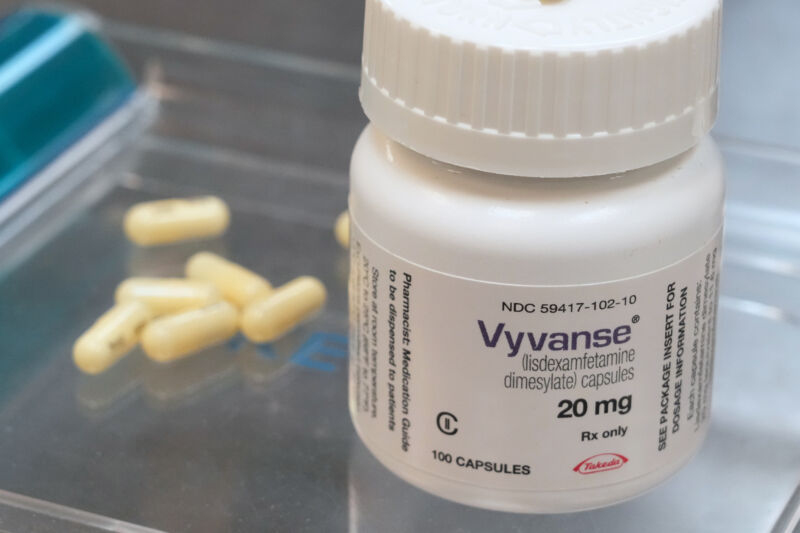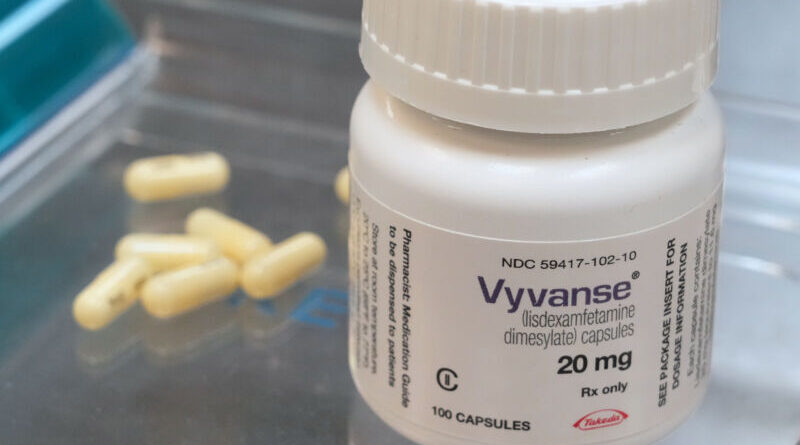ADHD drug shortage prompts DEA to increase drug distribution by 23.5%

Although the supply of Adderall and its generic versions is finally recovering after a long-term shortage, the Drug Enforcement Administration is already working to prevent a shortage of another drug for depression/hyperactivity disorder: Vyvanse (lisdexamfetamine) and its generic versions.
This week, the DEA said it will increase the permitted production of lisdexamfetamine by about 23.5 percent, increasing the current amount of 26,500 kg by 6,236 kg, for a new total of 32,736 kg. The DEA also authorized a similar increase in d-amphetamine, which is needed for the production of lisdexamfetamine.
“These changes are necessary to ensure that the United States has an adequate and uninterrupted supply of lisdexamfetamine to meet appropriate patient needs at home and around the world,” the DEA said.
Quotas
Like Adderall (amphetamine/dextroamphetamine salts), Vyvanse (lisdexamfetamine) is an amphetamine class product classified by the DEA as a Schedule II drug. Therefore, DEA controls its production levels to ensure demand is met while preventing excess supply that could find its way to the black market. The administration does this by setting a “general production limit” — which the DEA set for lisdexamfetamine this week — and issuing unspecified quotas to drug makers.
While a variety of factors have contributed to the shortage of ADHD medications, some medical and industry groups have blamed the DEA’s quota system for undermining demand and supply. For example, the Adderall shortage began in 2022 following a labor shortage on the product’s production line at Teva, the manufacturer of Adderall. But, even as this manufacturing problem is being addressed, prescription rates have increased dramatically, in part due to increased awareness of ADHD, expanded screening methods, and increased access through the rise of mobile services, which increased during the COVID-19 pandemic. In a report earlier this year, the American Association of System Pharmacists singled out the DEA’s deficits, saying they “exacerbate” the deficit.
In a joint August 2023 letter, the DEA and FDA responded to such criticism, suggesting that quotas are not to blame. Rather, it is that some manufacturers do not use their distribution of controlled drugs.
“It is based on DEA’s internal review of information, production, and sales data submitted by manufacturers of amphetamine products. [which include the two ADHD drugs]Producers only sold 70 percent of their allocation for the year, and there was another $1 billion worth that they could have produced but didn’t. they make or send them. The 2023 data so far shows a similar trend,” the FDA and DEA wrote.
The FDA and DEA have said that they will work with manufacturers to ensure that they will increase the production of drugs in the short term or leave their remaining shares.
Vyvanse deficiency
A similar dilemma is seen with the current shortage of Vyvanse and its generics. The DEA raised that number after hearings from the Food and Drug Administration. In July, the FDA sent a letter to the DEA requesting an increase in the amount. However, the shortage actually began in June 2023. At the time, Vyvanse’s manufacturer, Takeda, said that “production delays combined with increased demand” led to lower prices.
In August 2023, the FDA approved several versions of Vyvanse after Takeda’s patent expiration, raising hopes that shortages will ease with generic injections. the new ones. But supply problems persist. In November, the Association for Accessible Medicines, which represents generic drug manufacturers, sent a letter to the DEA saying that generic drug manufacturers are unable to obtain sufficient resources to “make their products commercially viable.” ,” because quotas were standing in the way, according to a Bloomberg report.
FiercePharma reports another point that can be raised by lawmakers and industry observers. Observers noted the timing of Takeda’s “production delay” months before the generic products hit the market. With very little profit from both conventional and illegal drugs, there is concern that manufacturers may neglect production.
Finally, the DEA marked one more point in the supply chain: exports to foreign markets. While the FDA estimated a 6 percent increase in domestic demand for lisdexamfetamine between 2023 and 2024, the DEA’s foreign data showed a 34 percent increase in lisdexamfetamine exports between 2022 and 2023, with expectations that exports will continue to increase this year and beyond. Therefore, the 23.5 percent increase in lisdexamfetamine is only part of domestic production. In fact, only a quarter of the 6,236 kg is destined for the US. Of the increased distribution, 1,558 kg is for domestic drug production, while another 4,678 kg is increased export demand, said the DEA.
#ADHD #drug #shortage #prompts #DEA #increase #drug #distribution
